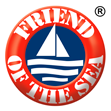The Problem
Seahorses are a group of 47 small marine fish species from the genus Hippocampus. They have a head and neck similar to that of a horse, a body composed of segregated bony armour, straight carriage and entwined prehensile tail, devoid of any teeth and stomach. They usually swim in pairs and evade their predators by personating the colour of submerged plants. One unique feature of seahorses is that the male takes up the eggs from females into their forward-facing pouch and later on releases the youngs once they are mature. This allows the females to generate greater numbers of eggs resulting in fast reproduction. They are also monogamous.
Sea horses are distributed mostly in the shallow tropical and temperate saltwater worldwide. Their common habitats include areas such as estuaries, coral reefs, seagrass beds and mangroves.
There are many reasons why seahorses are tumbling down in numbers. First and foremost, biological usage such as legal and illegal capture of the species for decorative exhibition such as souvenirs. Besides, significant numbers of the seahorses mostly juveniles are traded for aquariums. Likewise, over 20 million seahorses are estimated to be traded for the manufacturing of traditional Chinese medicine.
Seahorses are often captured alongside other commercial fishing. Man-made activities such as pollution from domestic and urban wastewater, agriculture and forestry effluents are also harming the proper growth and reproduction of seahorses. Furthermore, deforestation leads to increased deposition in the surrounding marine water bodies leading to habitat degradation of seahorses.

Environnemental consequences
Among the 44 species listed in the IUCN database, 18 are currently falling off in numbers. Australia, Indonesia and Malaysia top the list each with eight of the species and they are followed closely by Philippines, Singapore, Thailand, India And Vietnam each of which possess seven of the species. Other major areas of concern are Cambodia (6), Hong Kong (6), Taiwan (6), China (5), Japan (5) and the United States (5).
There is no information available about 38.6% of the total numbers of species while 4.5% and 27.3% are categorized as endangered and vulnerable respectively. The White seahorse is a resident of Queensland and New South Wales regions of Australia is termed endangered. Another endangered species named as Knysna seahorse is extant of South Africa (Western Cape). Most of the vulnerable species belong to the aforementioned countries.
Possible Solutions
Many steps should be taken to encounter the extinction threat to seahorses which are a flagship species of marine environments as well as a key species of perceiving reproduction biology due to male pregnancy.
Firstly, habitat/site and resource protection and management would ensure continued free movement and propagation of the seahorses.
Besides, species management by controlling the harvest and trade of seahorses is crucial to safeguard them. 150 countries in the world have signed the Convention on International Trade in Endangered Species (CITES) which prevents commercial trading of wild species like seahorses if their existence is under threat. The Hippocampus species are currently listed under CITES and these legislations need to be implemented. Moreover, research on the taxonomy, population trends, habitats of the seahorses is a call of the day.
Finally, awareness should be promoted about the seahorses through formal education, training and campaigns
WSO Activities and initiatives
WSO’s Friend of the Sea project is taking the following initiatives to preserve the seahorses as part of their mission of certifying products coming from sustainable agriculture and aquaculture:
- Communicate with government, non-government, print and electronic media, academic institutions, civil society and law enforcement authorities and thereby make them aware of the distressing situation of many of the seahorse species.
- Liaise with aquaculture, industrial and other relevant business leaders to remind them of their duties towards environmental sustainability and urge them to follow eco-friendly policies.
- Participating and organizing various webinars, symposiums and conferences to educate local communities on the importance of seahorses so that they and become vigilante against their illegal trading and also help in data collection related to their habitats and population trends.
- Launch awareness campaigns in change.org or similar platforms.
Call to action
- Vote for politicians at council, state and federal level who are concerned about the environment and would promote legislation to protect seahorses if elected.
- Promote the establishing of protected marine water environment which would limit commercial activities such as finishing, tourism, etc. so that habitats of seahorses would not be disturbed.
- Allocate enough funding to conservation biologists, ecologists, evolutionists and molecular biologists who are working on seahorses.
- Purchase only Friend of the Sea certified sustainable products, including seafood, UV Creams, Omega3.
- Sign Friend of the Sea Petition on Change.org.
How you can help
- You can support the Save the Seahorses campaign by signing the Change.org petition, which will help Friend of the Sea convince seafood and fishing companies to make a change benefit both for the fishing industry and conservation.
You can stop eating shrimps, as trawlers have the most impacting effects on seahorses population.
You can donate money to this campaign to raise awareness on site and help us develop more sustainable fishing practises to avoid by catch.
If we all work together, we can save the emblematic seahorses from extinction.









